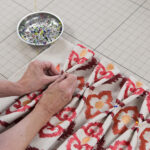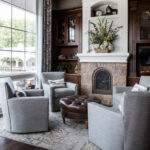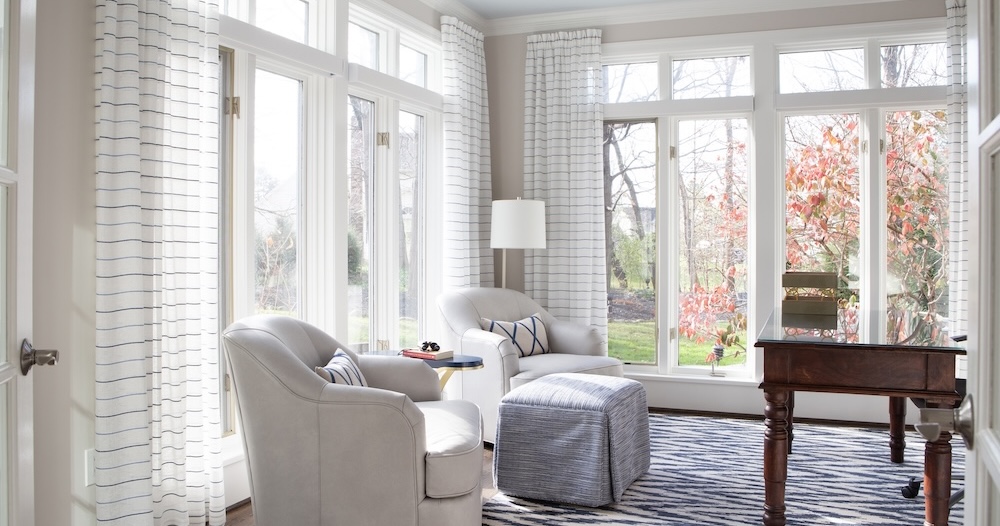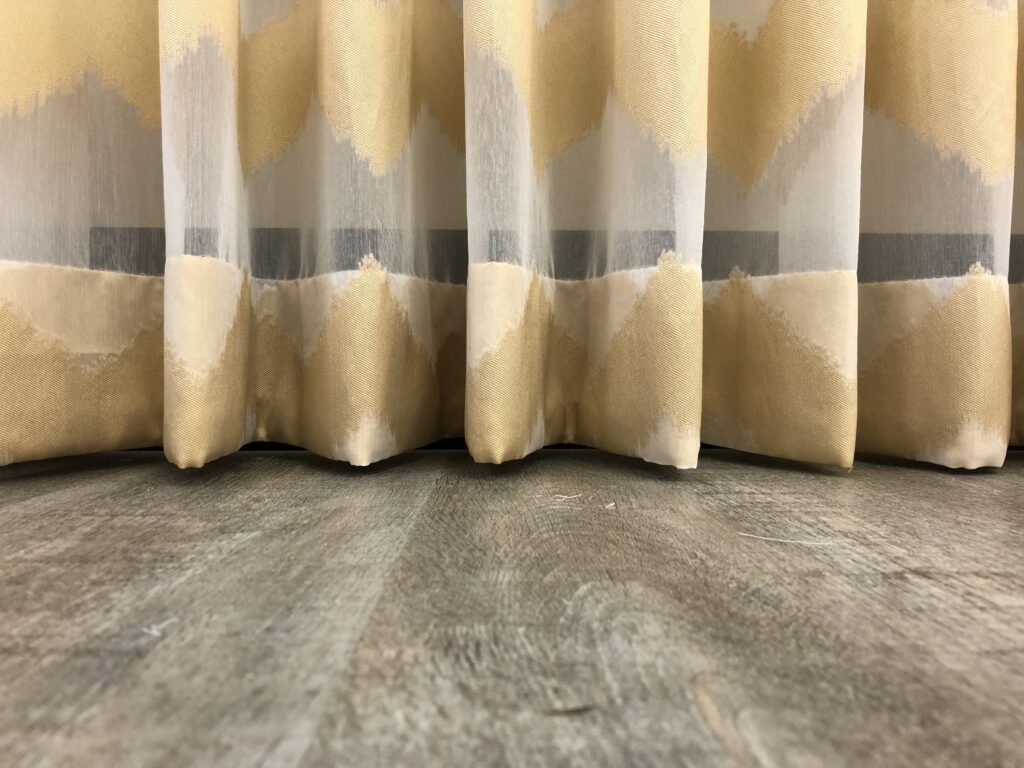
Draperies impact the ambiance of your space. Some clients prefer a soft, flowing, and unstructured look, which can create a romantic or laid-back aesthetic. However, at Parkway Window Works, most of our designer’s requests are for structured panels with well-defined vertical folds.
In a perfect drapery panel, the pleating at the top should create undulating folds that continue seamlessly to the floor. When this ideal structure is disrupted, it’s often due to an issue known as flaring.
Flaring occurs when the bottom portion of the drapery panel loses its defined folds, appearing messy or puffy — an inconsistency that detracts from the overall look of the window treatment.
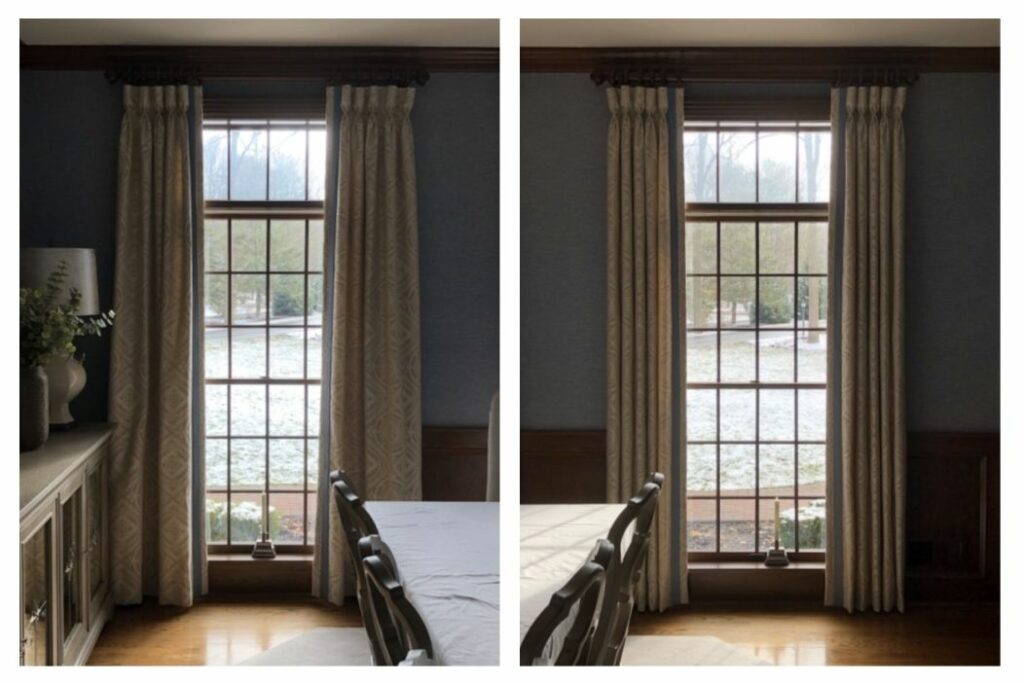
What causes flaring?
The most significant factor contributing to drapery panel flaring is fabric selection. It’s important to note that 100% polyester fabrics, due to their wrinkle-resistant properties, can resist conforming to the desired shape, leading to flaring. Similarly, fabrics with strong horizontal weaves, such as rib or rep weave, can fight against the folds at the hem, resulting in an unstructured appearance and flaring.
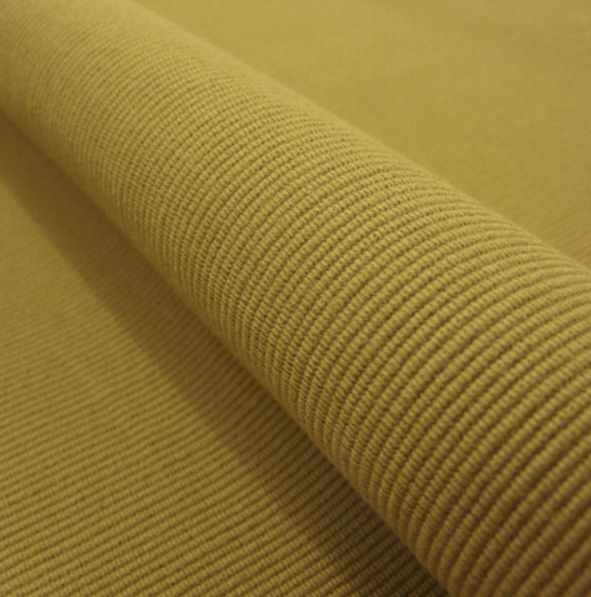
How can flaring be prevented?
It’s essential to adhere to the manufacturer’s guidelines when choosing fabric for drapery panels. Using upholstery fabrics or wide fabrics ‘up the bolt’ instead of railroaded can lead to flaring, so it’s important to use the fabric as intended to prevent this issue.
Choose fabrics with a blended fiber content, such as cotton/polyester or linen/polyester blends, to avoid flaring in your drapery panels. These blended fabrics are less likely to flare and offer a balance of durability and drape. Steer clear of rib weaves and upholstery fabrics for drapery panels, choosing these instead for other treatments like cornices, box pleat valances, and cushions.The fullness of the drapery panel is a crucial consideration. Standard fullness, which is two-and-a-half times the window’s width, is recommended. Reducing fullness to save on fabric or minimize the stack back can result in less fabric per pleat, causing the folds to spread and flare at the bottom, particularly in longer panels. For two-story window treatments, a minimum of three times fullness is advised to preserve the shape of the folds from top to bottom.
What if I already have a flaring panel?
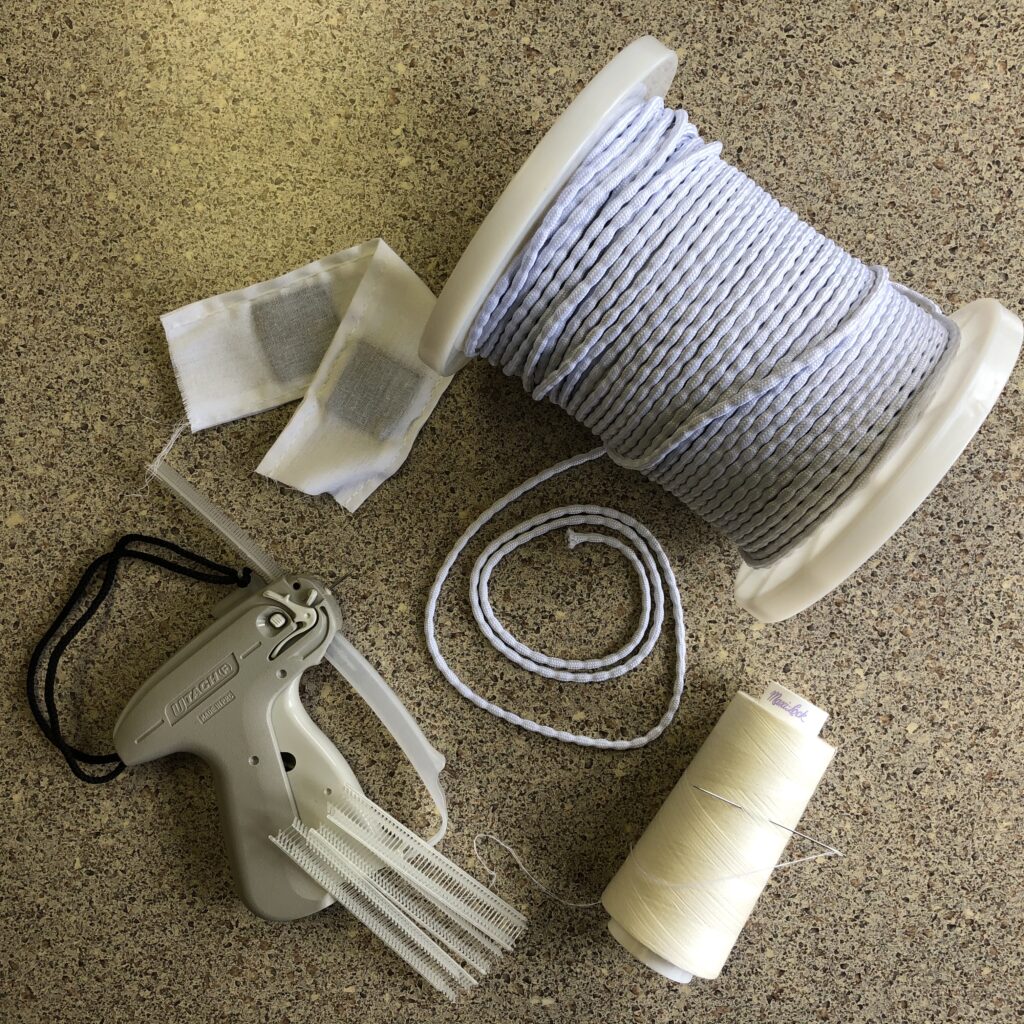
If your finished drapery panel is already flaring, don’t worry. There are several remedies available. One option is adding weights to the hem. Heavy 1-2″ weighted strips can be hidden along the bottom to help pull the fabric down and maintain the structure of the folds. You can also add memory stitching to stationary panels by sewing a chain stitch to the back of each fold at the hem or, in extreme cases, using a tag gun to attach the folds physically. Remember, if you need help fixing your flaring drapery panels, consult a window treatment professional for assessment and recommendations.
Creating beautiful, structured drapery panels requires taking steps to prevent flaring. Selecting suitable fabrics, allowing for adequate fullness, and following the manufacturer’s recommendations will minimize the risk of flaring and help you achieve the desired look for your window treatments.
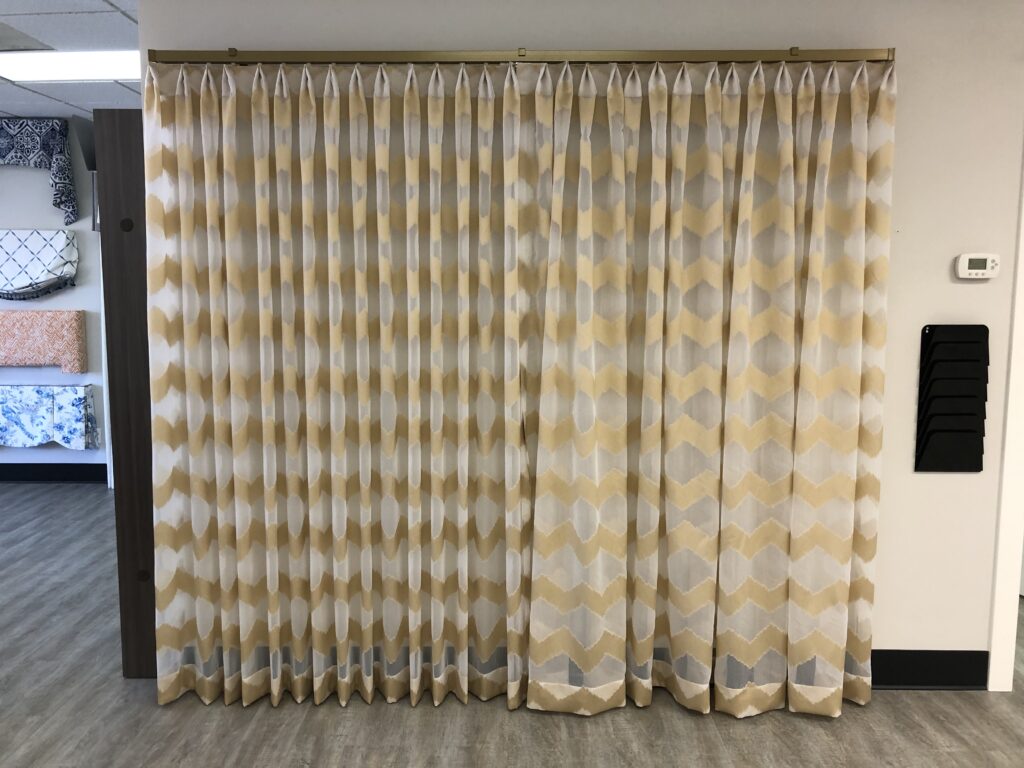
For the best possible results and to avoid dealing with flaring panels altogether, consider partnering with a custom drapery workroom like Parkway Window Works. Our experienced and skilled drapery professionals understand the intricacies of fabric selection, fullness requirements, and techniques to prevent and fix flaring, ensuring you can enjoy stunning, flare-free window treatments. Ready to get started? Contact us today to schedule a call.

